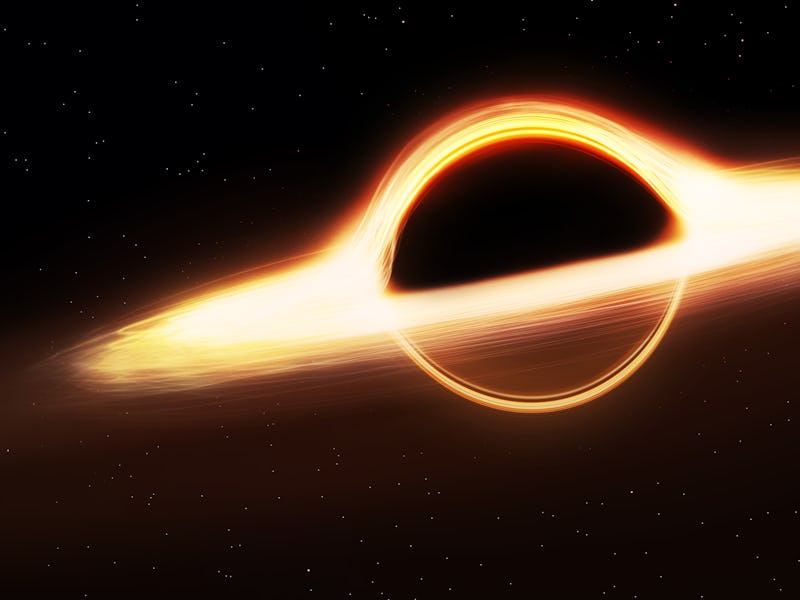107 years later, scientists have vindicated one of Einstein’s most remarkable theories
It’s never too late!

The problem with black holes is that they are really big and really, really far away. They block our view of their backsides, and signals from the side we can detect are faint. That makes studying the swirling, superheated matter draining into them (the accretion disk) hard to understand and even harder— if not impossible — to see.
But this past summer a team of X-ray astronomers announced in Nature a fortuitous discovery that provides a new way to study black holes and their immediate surroundings in jaw-dropping detail — with a little help from one of Einstein’s most remarkable predictions.
“We’re seeing light coming from the bit of gas that's all the way behind the black hole getting bent all the way round into our line of sight,” says Dan Wilkins, the study’s lead author and a research scientist at the Kavli Institute for Particle Astrophysics & Cosmology, Stanford University.
For Albert Einstein’s 143rd birthday, Inverse celebrates the world’s most iconic physicist — and interrogates the myth of his genius. Welcome to Einstein Week.
The light the astronomers detect is a reflection, or echo, of X-ray flares, emitted from a halo of ultra-hot gas surrounding the black hole known as its corona, as they bounce off the part of the accretion disk that lies in the black hole’s shadow.
The Einstein Connection
According to Einstein’s theory of general relativity, massive objects like black holes distort space and time, which both magnifies the light and forces it to travel on a different path than it would otherwise — this is known as gravitational lensing.
Einstein and his at-the-time outlandish and unproven theory were catapulted to fame after the English astronomer, Arthur Eddington, and colleagues first observed this phenomenon during a total solar eclipse in 1919. Stars usually remain in a fixed place in the sky, but those behind the Sun during the eclipse appeared to have shifted their position because the Sun’s gravity changed the path their light took to earth.
In an interview with Inverse, Wilkins says that their experiment is an even more extreme confirmation of general relativity. Whereas Eddington’s starlight was slightly nudged by the Sun’s gravity, the X-rays’ path is warped almost completely around the black hole. This happens because the X-rays are so close to the black hole they are even more strongly affected by its gravity.
“With all of the results we've had in general relativity over the last couple of years, I think Einstein should be feeling fairly satisfied that his theory of general relativity has turned out to be correct again and again and again,” says Wilkins.
“There’s all these phenomena that it predicts–everything from bending of light around the Sun, gravitational lensing, echoes from behind black holes, gravitational waves, as well — each one of these predictions has been proven right. So far, we haven’t yet found anything that his theory doesn’t stand up to.”
Cracking a black-hole mystery
“Black holes themselves are these dark and mysterious things,” says Elisa Costantini, a co-author on the Nature publication and Senior Research Scientist at the Netherlands Institute for Space Research (SRON), in an interview with Inverse.
Of course, says Costantini, black holes aren’t actually dark, because the material around them glows, and can even be ejected.
“There is this kind of balance between accretion and ejection, and there is an equilibrium that we don’t understand fully, but that allows the system to self-sustain.”
The X-ray echo observation was possible because the black-hole’s flares were particularly short and bright. In February, the same team published a second paper using the same observations to tease out what is causing the X-ray flares. The ultimate goal of this research is to develop a new tool for mapping black holes’ surroundings and even for better measuring other fundamental properties like mass and how fast they spin.
“This is a really exciting time in X-ray astronomy and the study of black holes,” says Wilkins.
Bigger and better X-ray telescopes are beginning to come online including NASA’s Imaging X-ray Polarimetry Explorer, IXPE, which launched in December 2021. Two new X-ray telescopes are slated for launch in the next year: the joint JAXA/NASA X-ray Imaging and Spectroscopy Mission (XRISM) and the X-ray Polarimeter Satellite (XPoSat) from the Indian Space Research Organization, ISRO. Longer-term, the European Space Agency will launch Athena “the largest X-ray observatory ever built” in the early 2030s.
“The real dream is getting a clearer view of what’s happening right outside the event horizon,” says Wilkins, “and also being able to look at black holes that are further away, so... we’re looking at longer ago, so we’re able to see in more detail how black holes grew and how they evolved with their galaxies.”
On his 143rd birthday, Inverse celebrates the world’s most iconic physicist — and interrogates the myth of his genius. Welcome to Einstein Week.
This article was originally published on